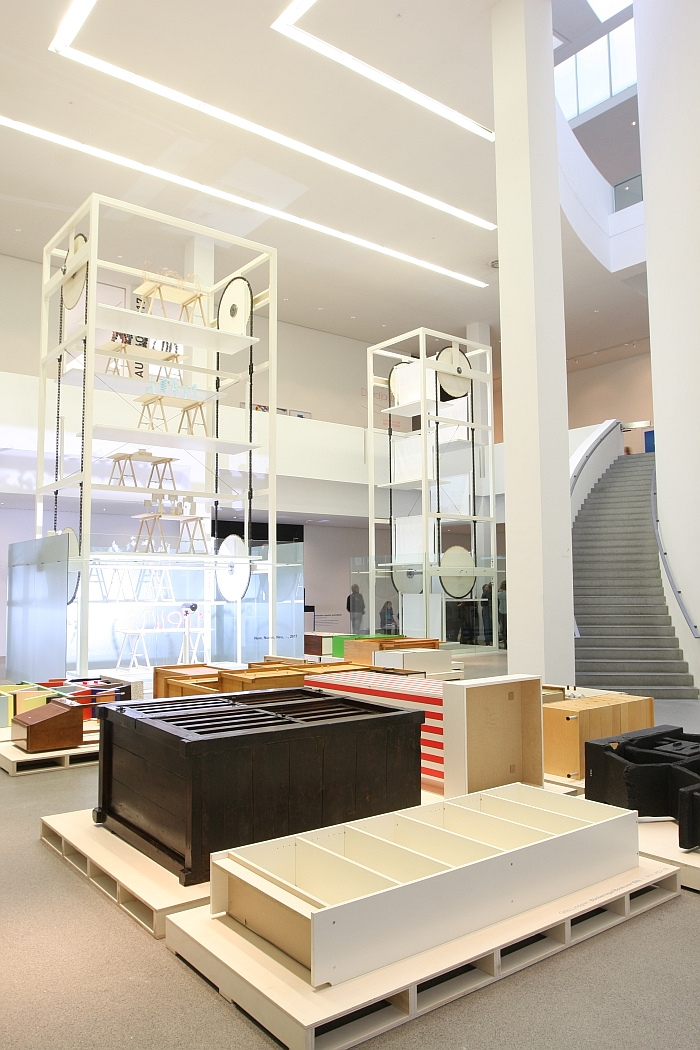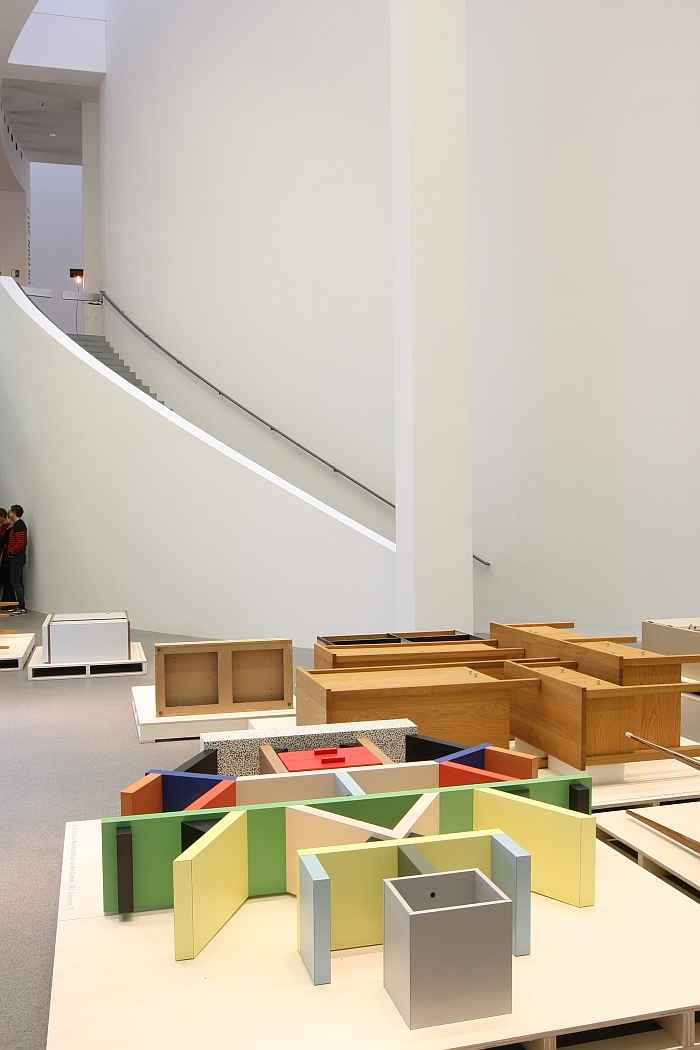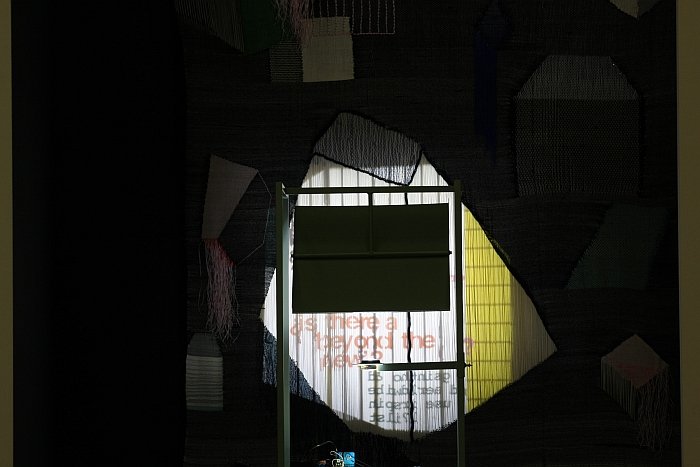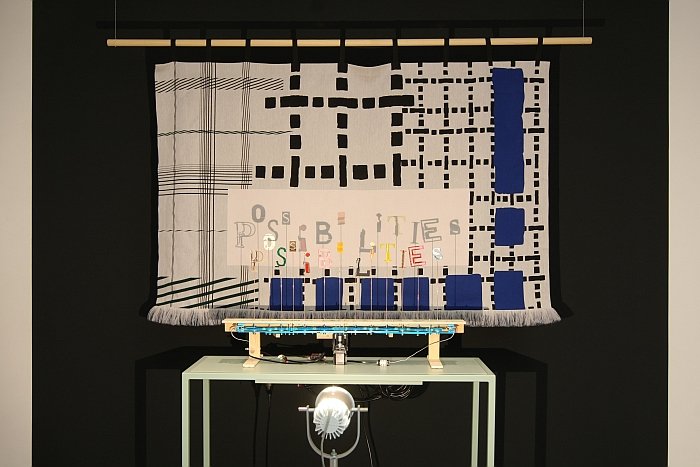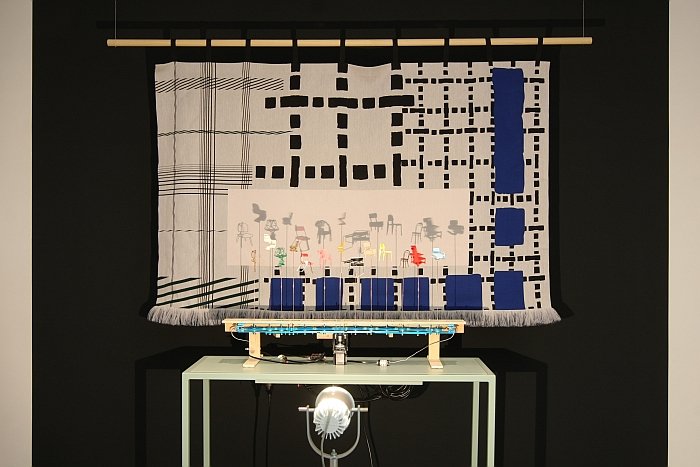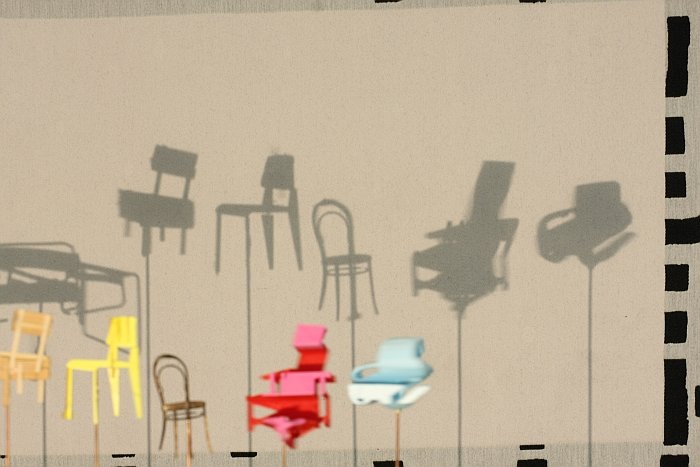Can innovation be an end to itself? Are we living in excess? Do things bewilder and inspire us still? Does a museum collection inevitably lose its link to reality as time goes by? What is good design?
The exhibition Hella Jongerius & Louise Schouwenberg – Beyond the New at Die Neue Sammlung Munich poses a lot of questions.
Questions which needn't necessarily find answers, but which should serve as inspiration and motivation to further questions, and thus a deeper discourse on design.
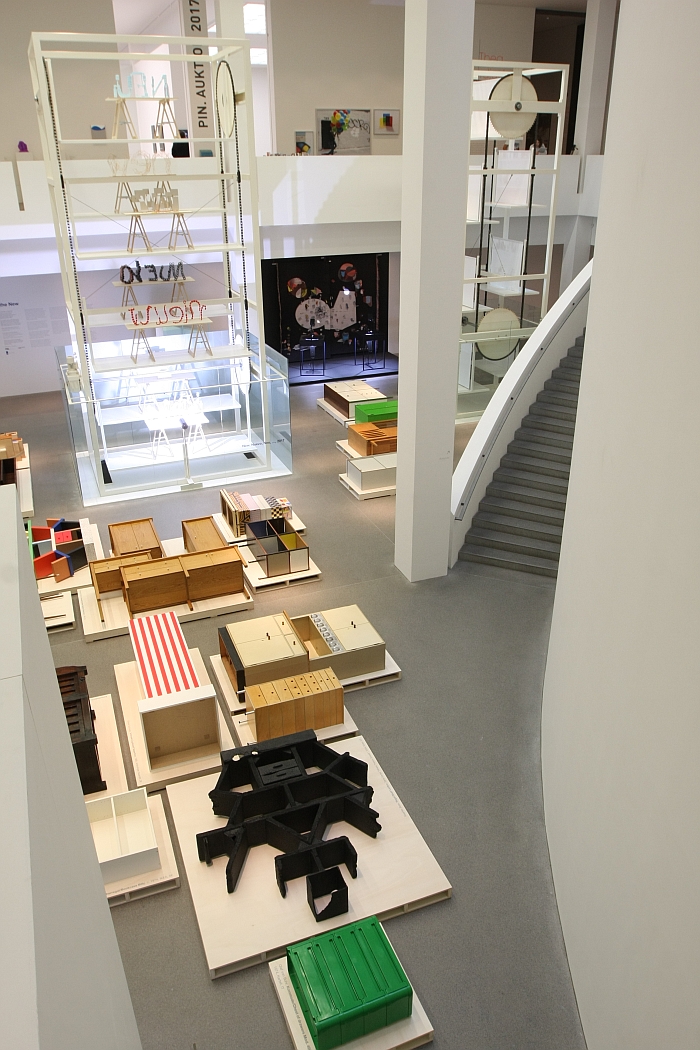
In 2015 Dutch designer Hella Jongerius and Dutch design theorist Louise Schouwenberg published Beyond the New, a Manifesto in which they questioned contemporary design's "obsession with the New for the sake of the New" and challenged designers to "take the lead in a much-needed change of mentality"
In 2016 there followed the showcase A Search Behind Appearances for and with Serpentine Galleries, a series of mechanical installations through which they sought to explore the potential of design, to celebrate rather than criticise, while at the same time questioning contemporary design, the contemporary design industry and the contemporary designer.
With the exhibition Beyond the New at Die Neue Sammlung – The Design Museum, Munich comes the third project in three years, and an extension as much as a continuation of that work,
"The Manifesto title, Beyond the New, can be quite a daunting phrase, and for me as a designer it was important to give it hand and feet", explains Hella Jongerius, "when the Serpentine asked us to do a follow up to the Manifesto we explored the possibilities of design and here we explore more the cultural meaning of design in a museum, and the role, importance, of a museum archive for design and the design profession"
An exploration which by necessity requires an awareness of design in a museal context.
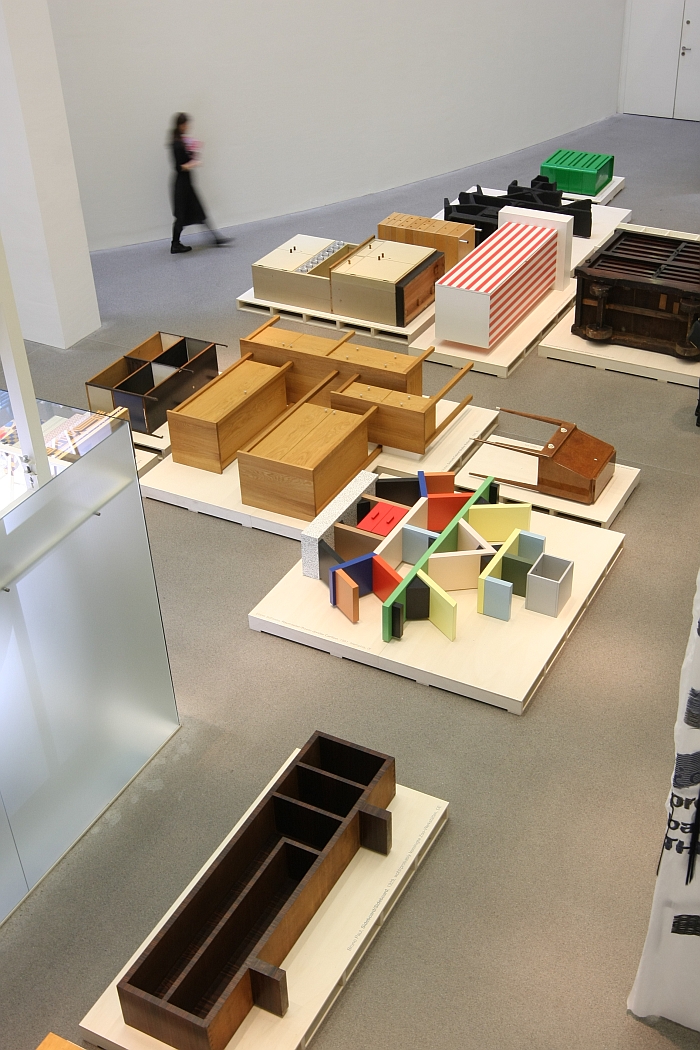
Aside from being the third incarnation of Jongerius & Schouwenberg's own project, Beyond the New is also the third positional showcase on contemporary design staged by Die Neue Sammlung in their so-called Paternoster Hall, a space in the heart of the museum building dominated by, well, two Paternoster, tirelessly and diligently doing their endless, ultimately pointless, rounds. Like a Design PR explaining the inherent newness of a new project.
While the Paternoster play host to the installations "Objects and things" and "New, nuevo, Neu..." which explore in different media the question of new, and for all continual newness, in product design, and thus a nod back to the 2015 Manifesto, the space around them is given over on the one hand to four installations originally presented in context of A Search Behind Appearances, installations which discuss serendipity in design, the reality of the design market and our individual responsibilities in context of design; and on the other to Reading the Archive, a series of specially created wall hangings, hangings which pose questions set to help visitors better read design. And for all better read design exhibitions/installations.
In addition, and as arguably the most direct connection to product design, Beyond the New presents 18 cupboard/shelving units by the likes of Erich Dieckmann, Axel Kufus or Ettore Sottsass, and selected by Jongerius and Schouwenberg from the museum's, considerable, collection. Not that one's focus should be distracted by the cupboards/shelving units, they are merely conduits, Beyond the New isn't a design exhibition about objects, but a design exhibition about design, or to quote the 2015 Manifesto "Design is not about products. Design is about relationships"
Beyond the New is an exhibition about not only Hella Jongerius and Louise Schouwenberg relationship(s) to design, but also the relationship(s) of consumers to design, designers to design, the design industry to design, and also the relationship of design as collected and exhibited in museums to design.
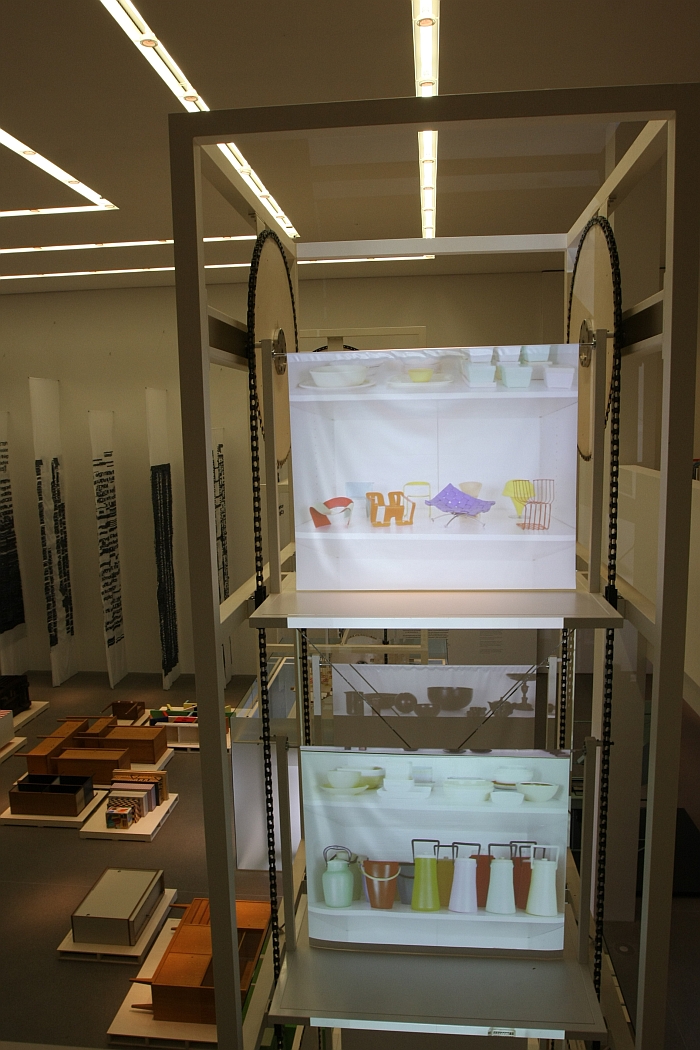
A recurring, if not central, theme of the Manifesto, A Search Behind Appearances and now the exhibition is the question of Good Design. Not a new question, but a question which never loses its fascination. Or relevance. Especially in today’s "It's all design! Celebrate! Instagram! Consume!" society.
That the majority isn't, that we probably shouldn't, and that Good Design can also be, for example, good social design, good information design, good design research requires a well-tuned sense for what is "Good"
As chroniclers of the (hi)story of (good) design, design museums, and for all design museum collections are logical places to begin. Good places to be taught.
Accepting as one must, the illogicality of human subjectivity; a problem which in terms of, for example, beauty and morality has troubled human minds for as long as human minds have had the free time and energy to be troubled by such.
And as institutions powered by humans, design museums are not exempt from subjectivity. From subjective assessments of what is "Good".
Design museums are aware of such, and certainly an institution such as Die Neue Sammlung with its long experience is well aware of both its responsibilities and the challenges inherent in building a relevant, sustainable contemporary design collection. And are equally well aware of society's expectation that design museums help them understand what Good Design is.
A function which the MoMA New York's series of Good Design exhibitions in the 1950s arguably complicated through the addition of a dose suspicion, when not cynicism, to compliment the subjectivity. Realised in conjunction with retail outlets, the Good Design exhibitions presented brand new objects in a museum context, and thus completely blurred the division between museum as cultural mediator and museum as commercial supporter.
How then should museums mediate ideas of Good Design?
"A museum is an ideal platform for discussing the contemporary discourse in design", answers Louise Schouwenberg, "and so I believe museums should concentrate on presenting that discourse rather than on trying to show, to define, what is Good Design."
Beyond the New is just such a museal discourse. The visitor being challenged to develop their positions for themselves. But not left to their own devices: the texts, statements and installations providing assistance, and when not always leading to direct answers then certainly to questions that help you navigate your way forward.
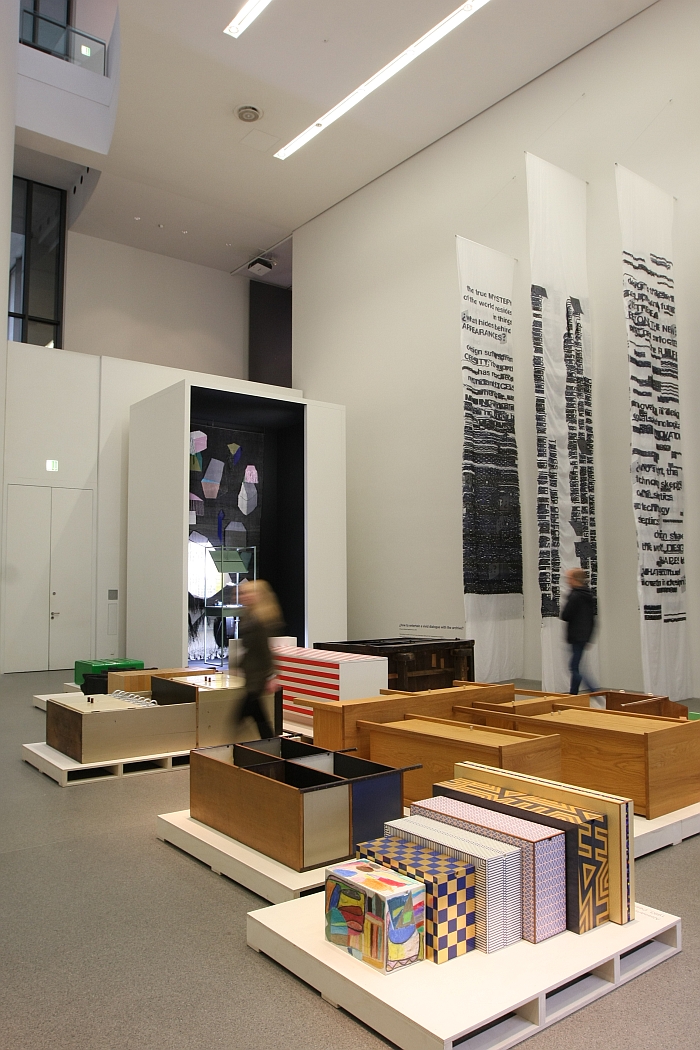
Design museums are, almost by definition, unnatural environments. Whereas other museums specialise in objects that most of us are, generally, unlikely to have at home - mummies, dinosaur skeletons, medieval torture implements - design museums house the familiar, things we may have at home: the important difference between our thing and a design museum object being one of context, that in which the object finds itself and that in which we find ourself to it.
Or as Hella Jongerius surmises the paradox of the design museum object, "it is not a thing that functions any more, not only doesn't function as a thing on its own, but every day things always exist in relation to other things and as soon as you isolate it from its function and social context it becomes an object. And how do you view a thing that has become an object, which has no value as an object?"
A question that becomes even more acute through the presentation format of the 18 cupboards/shelving units from Die Neue Sammlung’s collection. On their backs.
Sorry, did we not mention that earlier!
And therefore not only robbing them of their function because they are in a museum, but because they are unable to perform their own essentially very basic function. A simple and effective tool and one which not not only allows for a new perspective on the objects and thus new questions on how one assess a design museum exhibit, but also, through the very easy analogy of the cupboard/shelving unit, those most necessity of museum utensils, allows for similar reflection on design museums: asks if, given their inherent subjectivity and unnaturalness, are we always, metaphorically, viewing design museums exhibits on their backs?
Beyond the New argues that we are. Not only because of the missing cultural, social, practical contexts but also the missing, and equally relevant, commercial context, for as Max Borka so neatly phrased it "design stands on two feet, one commercial and one cultural"
In a museum design stands on a white pedestal.
Which is fine.
As long as you understand that, and can interpret the messages thus received.
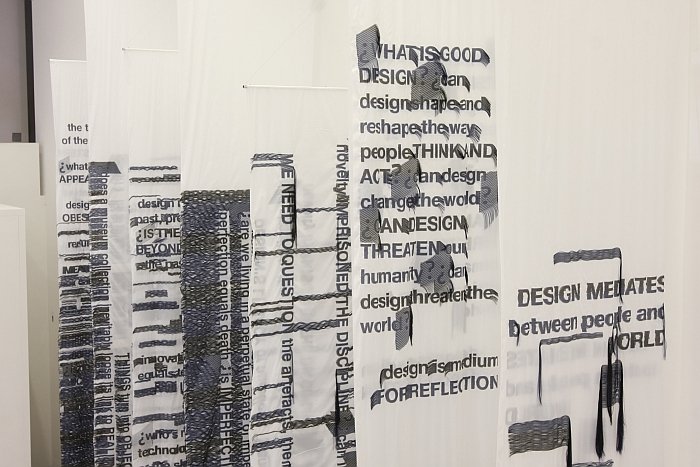
As an exhibition Beyond the New aims to help bring us to just such a position, through one the one hand helping us better understand contemporary design, on the other encouraging us to understand the inherent emptiness of the term "new", and on the rare and ever endearing third hand, through explicitly admonishing us to never forget that design exists in context.
An open and engaging exhibition with as much humour as conviction, as with the exhibition Breathing Colour by Hella Jongerius Beyond the New isn't instantly obvious, rather requires a bit of time to work your way through the themes, to decipher the clues and consider what that all means.
Not least in context of the very simple question of if the 18 cupboards/shelving units represent Good Design?
But what do Hella Jongerius & Louise Schouwenberg hope visitors get from the exhibition?
"A better insight", answers Hella Jongerius, "that through the questions posed visitors understand that as profession design isn't just about consumption but is also a cultural discipline, and maybe that design professionals supply some answers, or maybe even other questions, and thereby open a discussion within the design profession"
Hella Jongerius & Louise Schouwenberg – Beyond the New is bilingual German/English and runs at Die Neue Sammlung – The Design Museum, Pinakothek der Moderne, Türkenstraße 15, 80333 Munich until Sunday September 16th 2018
Full details can be found at http://dnstdm.de
